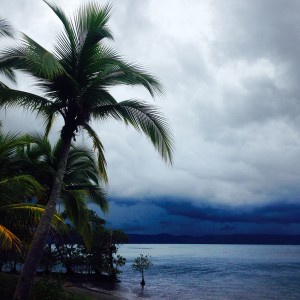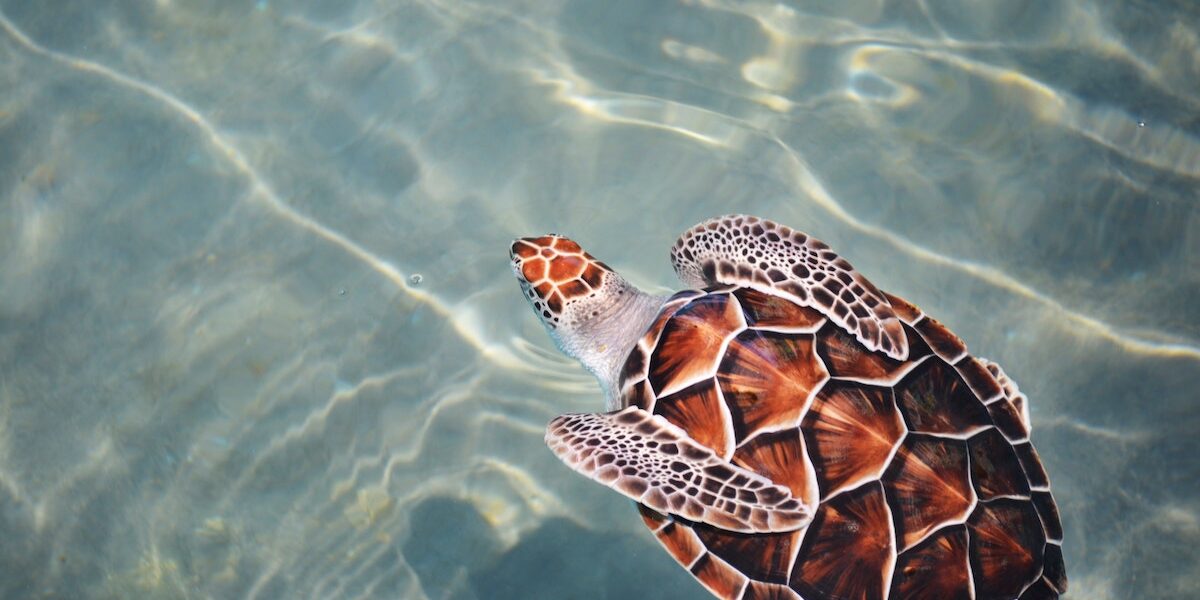By Ben Scheelk, Program Associate, The Ocean Foundation
Volunteering with SEE Turtles in Costa Rica – Part II
If only there was a turtle week. Granted, sea turtles may not inspire the same potent mix of fear and wonder as their razor-toothed elasmobranch neighbors, and the thought of a waterspout sweeping up a bale of jellyfish-slurping, sea grass munching turtles may not be a compelling reason for mounting a chainsaw-defense worthy of the cheesiest B-movie, these ancient reptiles are among the most awe-inspiring creatures to inhabit the sea and certainly worthy of a week of prime-time TV. But, despite that sea turtles were around to witness the rise and fall of the dinosaurs, and they have shown an incredible ability to adapt to a changing ocean, the precipitous decline of sea turtles in the 20th century put their ongoing survival into serious question.
The good news is that significant global efforts in the last few decades appear to be helping in the fight to bring back sea turtles from the brink of extinction. A sense of reserved optimism for the future of these iconic creatures pervaded many discussions we had when we journeyed to Playa Blanca on Costa Rica’s Osa Peninsula to volunteer for two days with LAST (Latin American Sea Turtles) in partnership with Widecast, a grantee of The Ocean Foundation.
Working in Golfo Dulce, a unique biodiversity hotspot considered one of only three tropical fjords in the world, the researchers of LAST are carrying out a well-organized and carefully conducted population study of the sea turtles that forage in this area. With the help of a revolving group of volunteers from all over the world, LAST, like dozens of organizations operating throughout Central America, are gathering data about the health, behavior, and threats facing sea turtles in the region. The hope is that this important information will provide conservationists and policy makers with the knowledge to develop strategies to ensure the long-term survival of this distinctive and prehistoric creature.
The work we participated in can be both physically and mentally challenging, and requires an expert combination of strength and grace. After capturing the sea turtles offshore in a net, a series of carefully orchestrated operations take place to gather data while making a concerted effort to minimize stress and harmful disturbance to the animal.
Hauled aboard the boat, a wet towel is placed over the turtle’s head to help pacify it. The turtle is then brought back to shore to an eagerly waiting cadre of volunteers donning latex gloves and sterilized tools. The ensuing steps—explained in detail during a pre-field orientation session and instructional manual—involves carrying the turtle on to shore where a series of measurements are taken, including the dimensions of its carapace (the dorsal or back part of the shell), plastron (the flat underside of the shell), and its sexual organs.

Then, a spot on its fin is thoroughly cleaned before a metal tag is attached to help track it over time. Although the tags are simple record stamps that do not collect or transmit data, the code on the tag allows researchers to know where the turtle was tagged so in the likely case that it is recaptured, comparisons can be made regarding its growth over time and where it has been. A few of the turtles we captured already had tags, or had evidence of being tagged in the past, including an especially large green turtle—one of the more challenging specimens to maneuver out of the boat—which had a tag indicating it had come all the way from the Galapagos Islands, over 800 miles away. Finally, for the turtles being tagged for the first time, a small piece of tissue is carefully removed for later genetic analysis.
This whole operation, under ideal conditions, takes place in under ten minutes to reduce the stress to the animal. Of course, maneuvering a massive turtle takes several people, and is not without some risk to the volunteers. After witnessing a green turtle karate chop a beaming volunteer, it’s clear that swimming thousands of miles makes them incredibly strong. Of course, the volunteer was fine. And the turtle too. It’s hard not to keep a smile working with turtles, even if pummeled.
Today, sea turtles face myriad threats in their ongoing struggle to survive in an ocean increasingly impacted by human activity. Of the seven species currently living in the ocean, four are critically endangered, and the remainder are either threatened or close to being threatened. Overcoming tremendous adversity from the moment they emerge from the beach’s sandy womb to make their instinctive dash to the sea, the additional threats posed by humans—pollution, coastal development, fishing, and rampant poaching—make their lives all the more difficult. But, efforts over the last few decades seem to be making a difference, and although many of the stories are anecdotal, there is a sense that sea turtles are on the road to recovery.

For me, the experience of working with sea turtles for the first time was like a whirlwind. No, a turtle-nado that carried me to a place where I felt like I belonged working alongside others that have also been touched by these amazing reptiles. Having the opportunity to interact with such an incredible animal—to hold its capacious head while the plastron is measured, to occasionally catch a glimpse of its dark, penetrating eyes, which have seen so many changes over the last two hundred million years—is a truly humbling experience. It brings you closer to your own humanity, to the realization that we are still newcomers on the stage, and that this ancient creature is a living thread, which connects us to our planet’s distant past.







